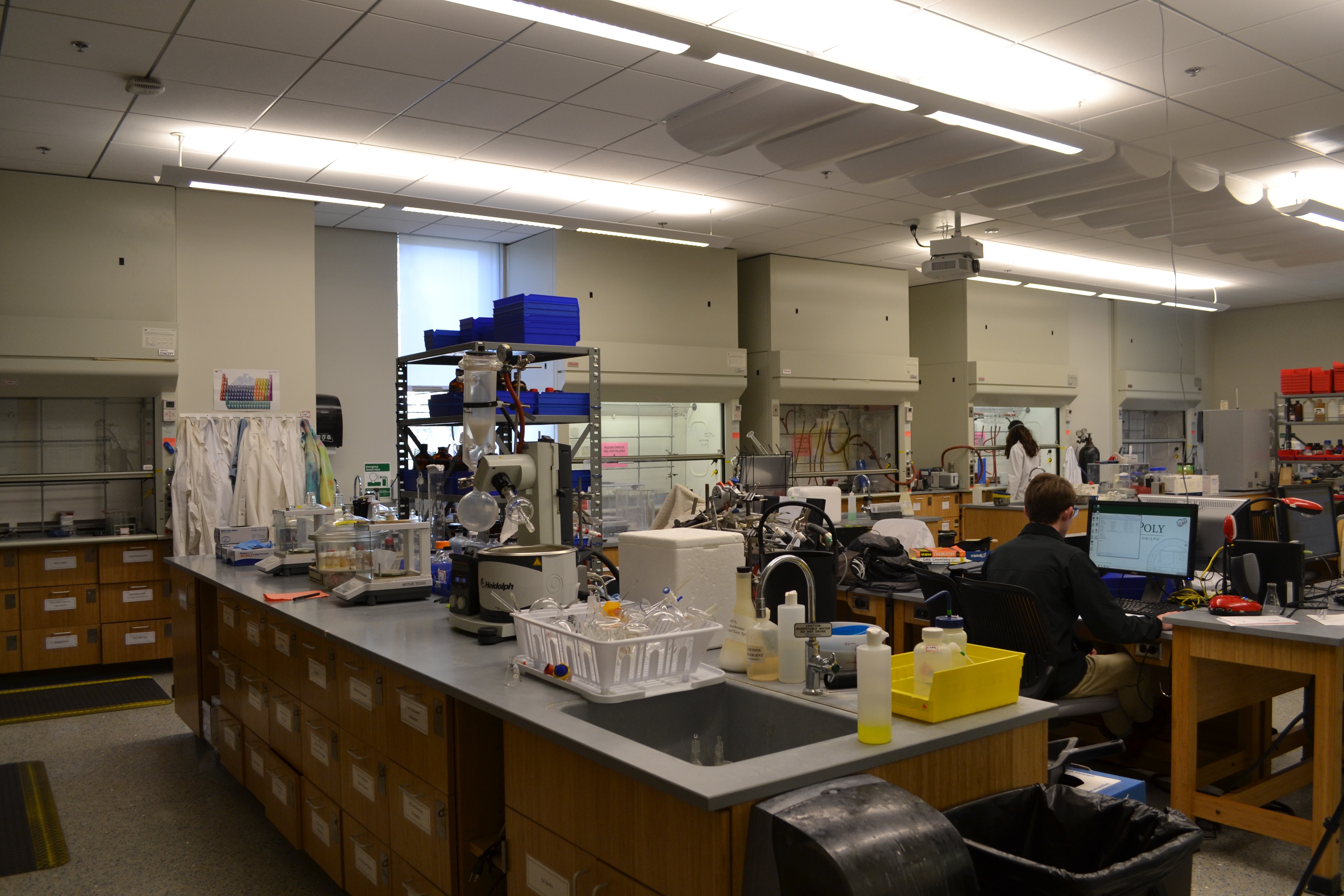Have you ever worked for something so hard, dedicated your time and efforts to that something, only to expect it to fail? Well, I haven’t either. The Eagon Research Group, a research lab right here on campus grabbed our attention when we heard they were in the process of developing new drugs to combat diseases like Cancer and Malaria, also known as the Harmine project. I know what you’re thinking: aren’t there already doctors all over the world working on this? And you would be right. But these students at Cal Poly are a small fragment of the whirlwind of scientific talk and experimentation to find a cure for those deadly diseases that just won’t go away on their own.

But getting used to failure is not the only idea that ceases to surface my group’s journalistic minds. When my group entered the unknown, also known as the Baker science building, we sauntered up the stairs, our patent leather sandals lagging behind each step. All excited to jump into the lab and see what all of the talk is about, our grammar stuffed brains simply did not understand that we could not wear our trendy sandals in the chemically infused lab. When we arrived in Dr. Eagon’s office, our hopes and dreams of entering a lab, when not required for a GE, came to a screeching halt as it was brought to our attention that all of our bare feet dangled out of our sandals, and apparently that is not allowed.
Unfortunately, we were unable to get the video footage we needed of the lab that day. But only a few days later, we laced up the Nikes sitting in the back of the closet and took a second try at getting into that miraculous lab. Amazingly, we made it in.

Unlike the students performing the research, as journalism students we start a project only to see it come to a complete end, whether that is in publication or submission. But to Dr. Eagon, who’s “primary goal when coming to Cal Poly was to introduce students to the struggle,” disappointment and failure are a normal part of the day. “You get so really used to dealing with disappointment but you get a thick skin and go at it with a kind of tenacity that makes the failure okay, and you kind of just persevere so when you do have successful reactions, it’s just that much more sweet, says senior biochemistry major, Tyler Sisley. The idea that our fellow students could be working so hard for something every week, every month, every year for maybe… nothing? That was simply crazy to us.

But as the project continued, a dilemma projected its black light onto our shining heads, what did all of this scientific gibberish mean? Luckily, one of our group members understood the puzzling vernacular, “Being able to report on this type of science research has been such a fun experience for me since I plan to go into public health communications after graduating”, says senior journalism major, Taylor Petschl. But for the rest of us, synthesizing organic molecules, tetrahydro-β-carboline, and drug resistance of P. falciparum came from a different world. “I’ve had to think about synthesizing molecular compounds which is something I never thought I’d have to remember after my chemistry classes in high school,” says senior journalism student, Kaylee Brunke.
But after much confusion and a lot of research, my group finally obtained a grasp on the information that grounds the research being performed. Though we initially curled our brows and tilted our heads at the terminology pouring out of Dr. Eagon’s mouth, we successfully got a hold onto the backbone of the project, and found it possible to explain what we were trying to showcase. As our project came to a close, we all realized how incredible this research group truly is, “I’ve never realized that these parts of campus existed. It’s so cool to see the lives of students that are outside our major, and the amount of work and effort that goes into it,” says senior journalism student, Sierra Newell.
Though we hit the ground running in scientific speak, a language we do not speak fluently, we finished this project with an appreciation for not only research and its ability to save lives, but for those students that are right down from the hall from us as well.